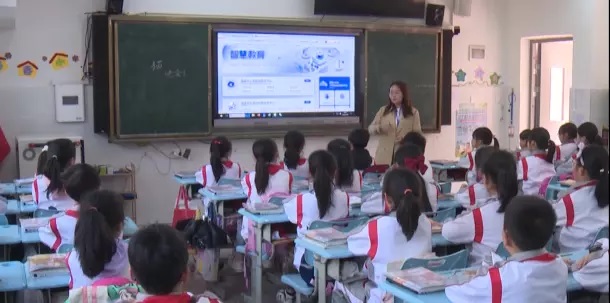Written by: Kinza Asif
Posted on: May 15, 2025 |  | 中文
| 中文
A classroom in a Chinese school.
Chinese education, with its rigorous and disciplined structure, remains one of the most talked-about topics in the global academic circle. The constant drive for academic excellence in the minds of Chinese students, make them endure a demanding, yet structured academic life. This article provides insight into the various phases of Chinese school life, including class structure, lunch breaks, extracurricular activities and pressure on student regarding infamous Gaokao, the college entrance exam. Additionally, the transformation and evolution of the academic system while maintaining tradition, and how it affects the lives of student, will also be discussed.
Chinese schools are characterized for their disciplined academic structure and demanding schedules. The day usually initiates as early as 7:30 a.m., beginning with a session of physical exercises for students designed to energize them for long exhausting hours ahead. Students often spend the whole day in class, sometimes continuing into the evening, covering fundamental subjects such as mathematics, sciences and Chinese language.
The classroom environment is renowned by strict discipline and an unwavering focus on academic excellence. Skilled teachers make learning enjoyable by using creative methods to simplify complex topics. Students are expected to stay fully focused and take detailed notes. Each lesson is intended to deliver maximum content in short duration, often leaving little space for creative thinking or open discussions.
One of the most unique facets of the Chinese education system is the heavy emphasis on after-school academic work. Students immerse themselves in completing extensive homework, project assignments, and relentless preparation for the highly competitive college entrance examination. This leaves almost no room for life other than academics.
In this long day full of academic rigors, and exhaustion of mind, a short break feels like a respite to students. This lunch break fuels them for afternoon classes. Typically, the duration is about one and a half hour, usually starting from 12:00 p.m. to 1:30 p.m., providing students a considerable time to refresh, socialize and have lunch. Mostly students prefer to have fresh lunch from school cafeterias, although some bring a home-cooked food. The meals served is nutritious and well-balanced, with portions of rice, meat, vegetables and some form of protein which help student recharge.
Chinese school system strongly emphasizes on extracurricular activities. They have designed extracurricular clubs that play an essential role for students’ development, providing opportunities for personal growth beyond the academics. These clubs offer a wide range of interests, from music and drama to art and sports, providing a valuable opportunity for students to explore their passion and develop new skills, and some may even discover a potential career through these activities. Participation in these clubs is encouraged by schools to ensure students maintain a balanced lifestyle while achieving academic success.
Gaokao is a critical turning point in the life of every Chinese student. It is the toughest exam a student has to attempt in order to continue pursuing their choice of career. Gaokao is the national college entrance exam that determines the future of a Chinese students. In Chinese society, this exam is not only seen as student’s academic potential but rather it is a reflection of one’s personal worth and success in society.
Every year in June, Gaokao spans two to three days with restriction on road near test centers, police roadblocks and strict control measures. Commuter are encouraged to adjust their travel times to avoid peak hours and congested areas around test centers. In these two to three days, this exam covers subjects like Chinese language, mathematics and a foreign language, usually English. A student spends years preparing to achieve high score as the Gaokao results play pivotal role in determining which universities students can attend, and this, in turn, impacts their career prospects and societal status. As such, the pressure on students for this exam is unparalleled.
Even the smallest discrepancy in score can make a difference between attending a prestigious university or being relegated to a less well-regarded institution. A failure in achieving high score is a significant setback in one’s academic life.
An awareness is growing about negative effects of intense pressure a student has to endure in order to survive this education system. Efforts are being made to create a more balanced approach to education, one that ensure academic excellence but also consider the mental health and well-being of students. Educational reforms have introduced measures to reduce amount of homework, improve the quality of teaching, and provide students more chance to grow personally.
However, because of the strong societal pressure around academic success mean that change come slowly. Students continue to feel the weight of Gaokao, with many still considering it as a defining moment in their lives. One might wonder how this trend will evolve over the next decade.

Smart Education Platform of China won UNESCO Prize for ICT (Information and Communication Technology) in education.
In conclusion, the school life in China is shaped by strict routine, intense pressure and relentless drive for academic success. From brief respite of lunch break to hours of study and life-defining Gaokao, Chinese students live under constant cloud of expectations. To transform this education system, both school and society must rethink their approach. Only then can students truly excel, not just in academics but in life as well.
You may also like: